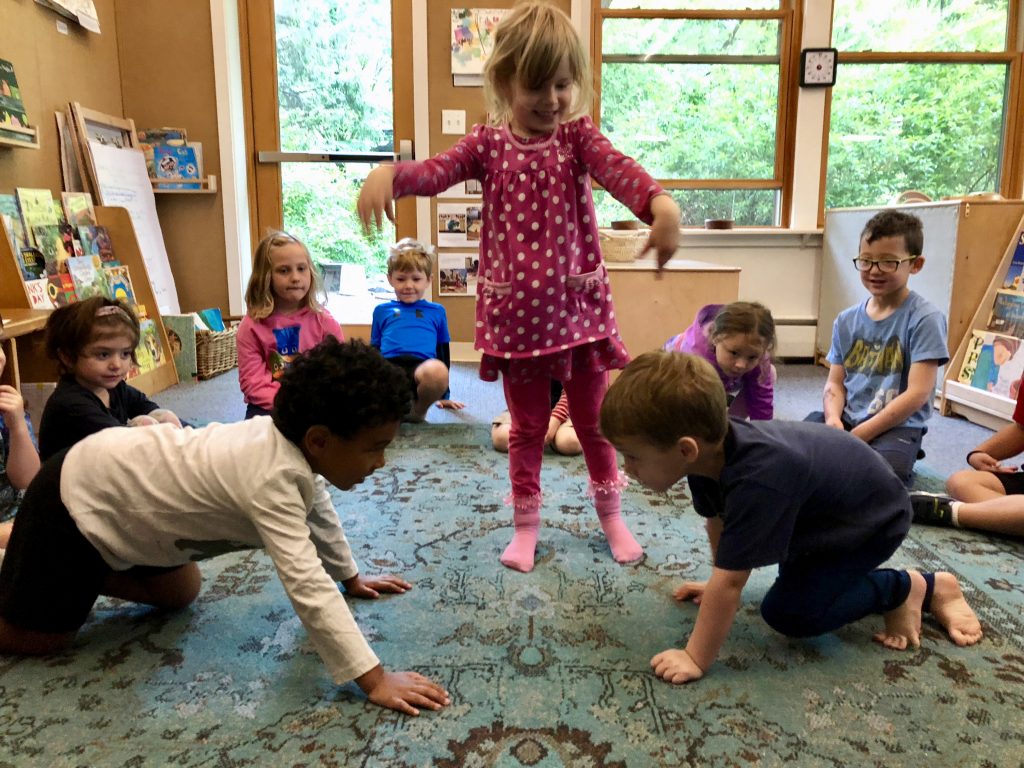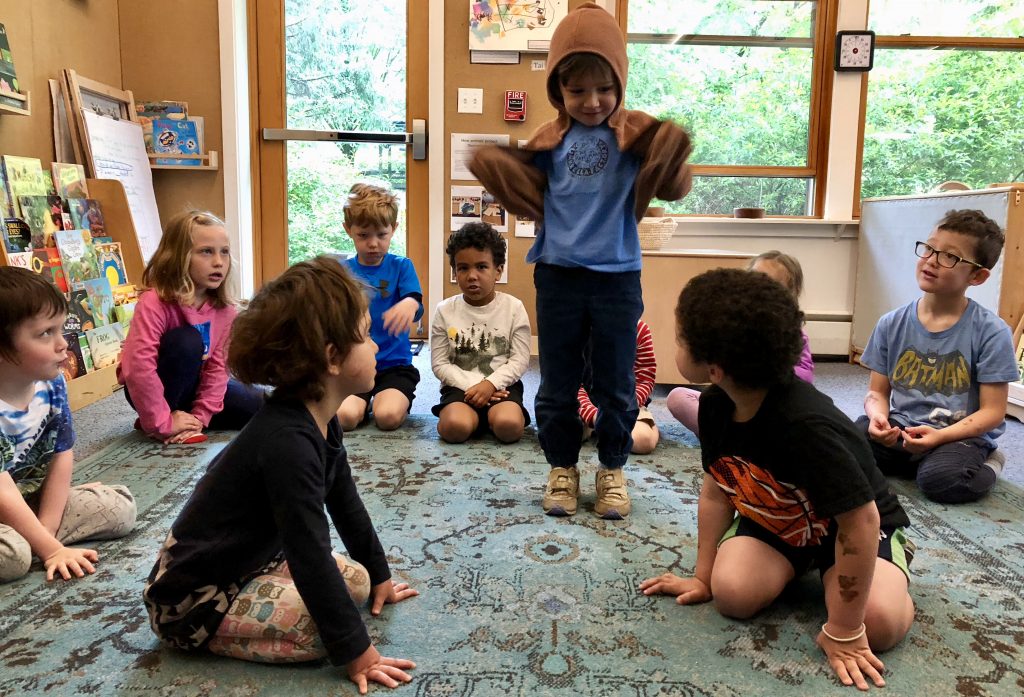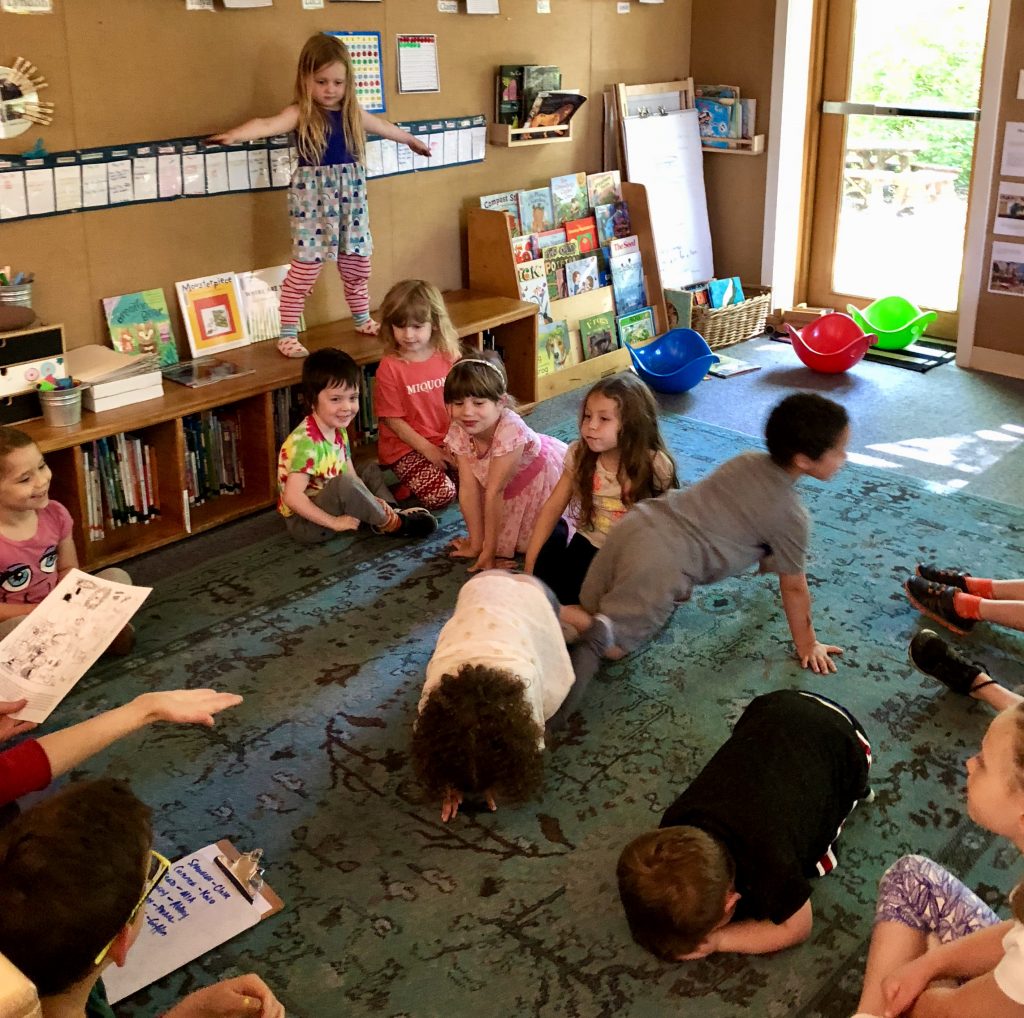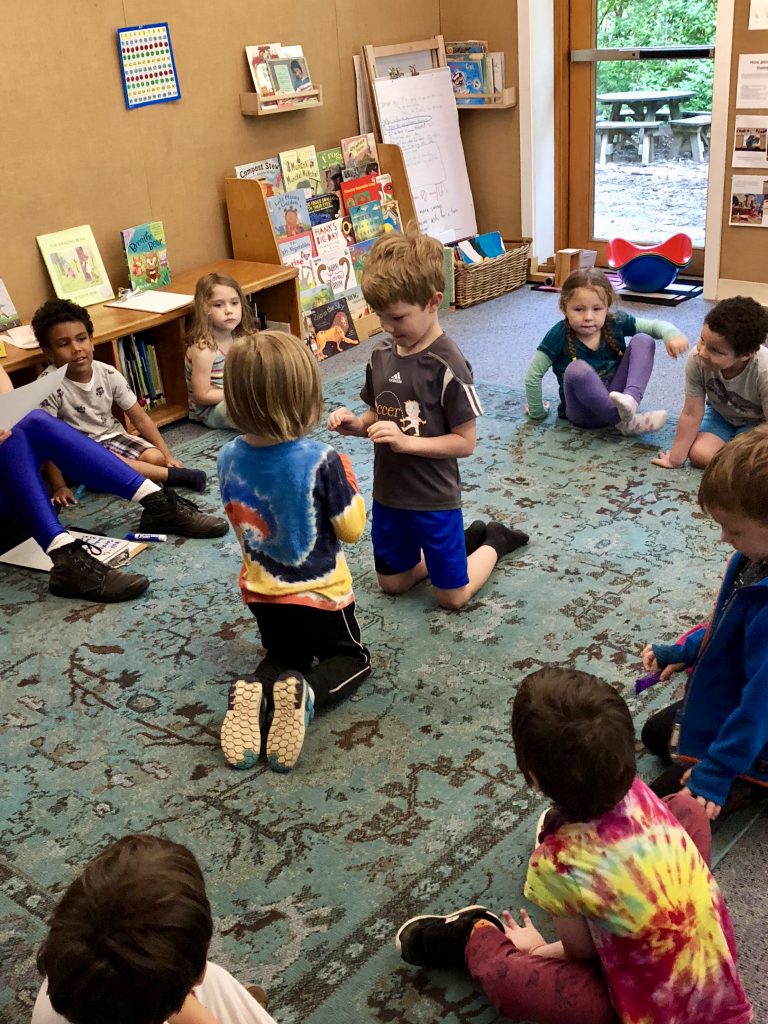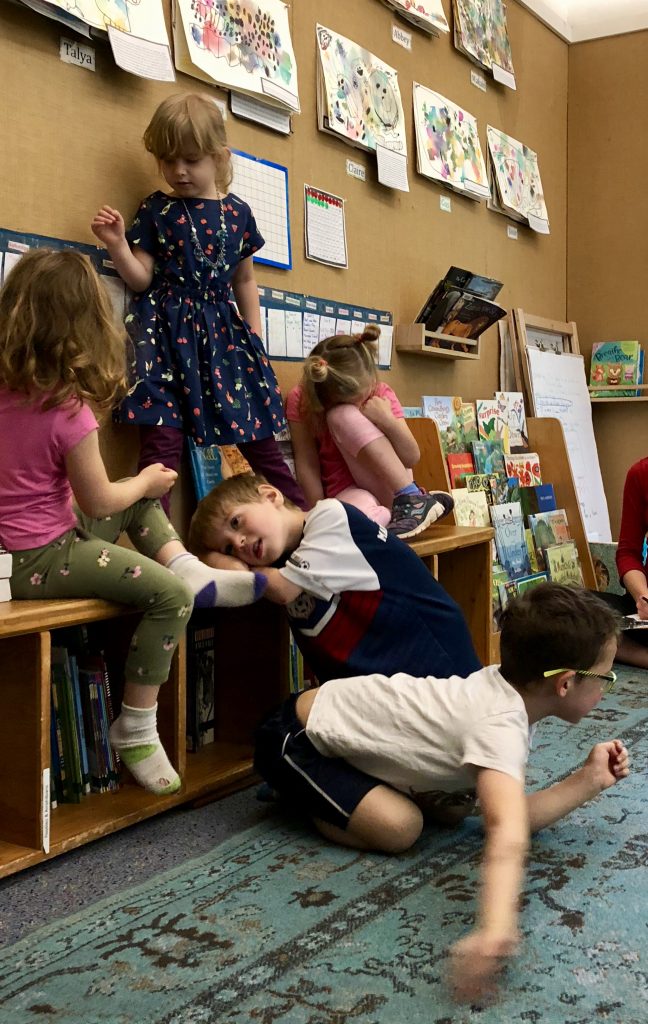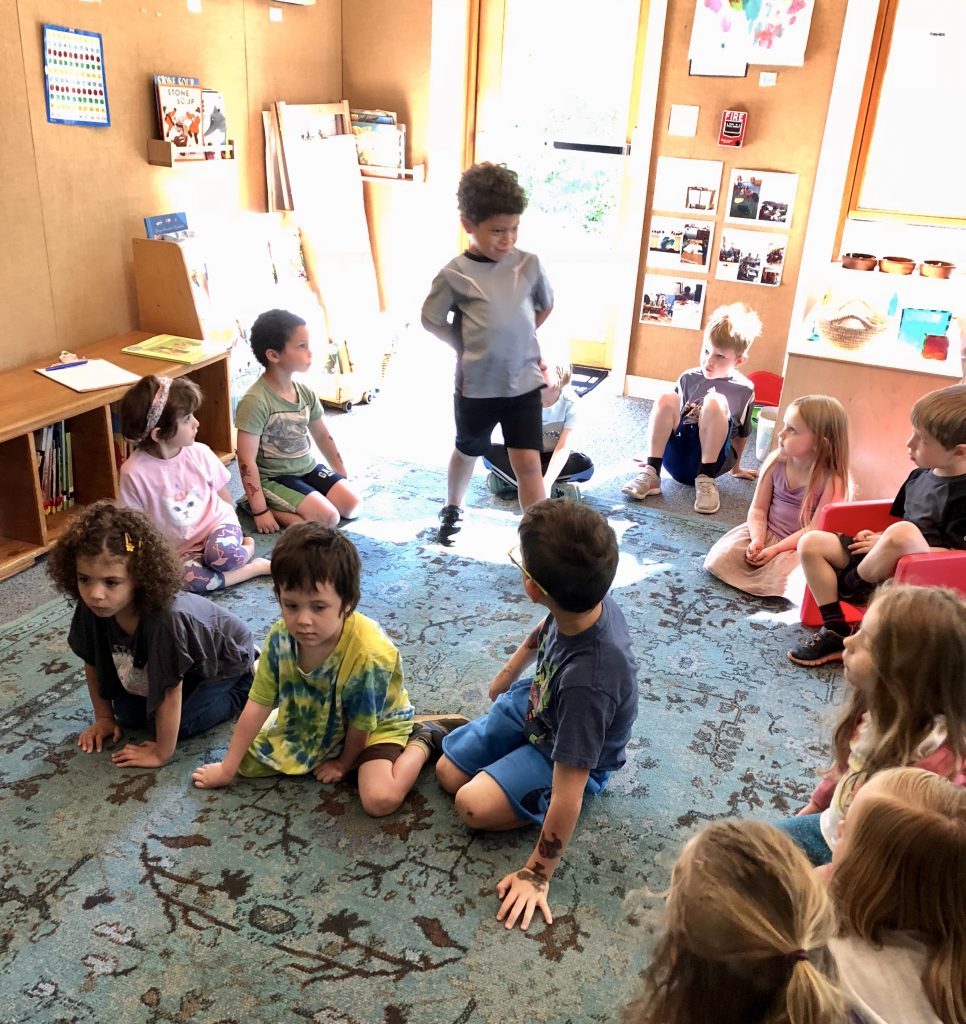Playing Stories
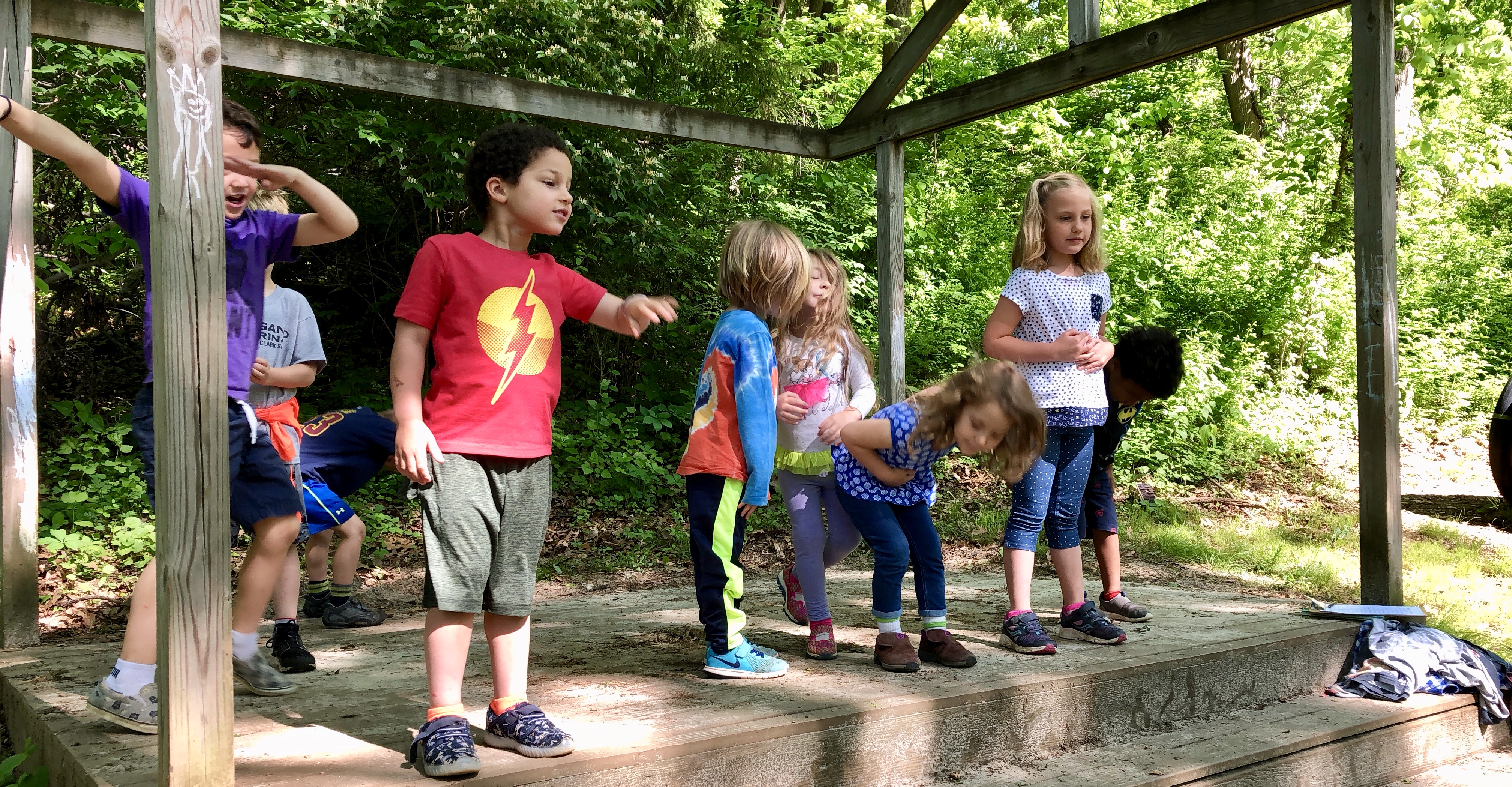
Inspired by the methods of the brilliant preschool and kindergarten teacher Vivian Gussin Paley, the nursery children have been acting out the stories we wrote for this year’s Miquon Grass literary magazine.
Each morning at meeting, a child’s story is selected to be acted out, or played. We read it aloud, talk about what characters need to be in the story, and then the author of the story becomes the director and chooses the actors. While playing the story, the children pay close attention to each other and the director, taking cues from each other, as they do in play, but in a heightened way with an awareness of the underlying narrative. And for the children playing the story, Gussin Paley says, “in dramatizing a concept, the child finds the natural method for concentration and continuity and satisfies the intuitive belief in hidden meanings” (The Boy Who Would Be a Helicopter, 1990, p.6). At the end of the play, the actors bow and the audience shows its appreciation! We sometimes do stories twice, if the children decide that’s what they would like.
Shifting stories from the oral telling to the written page, and finally to the shared stage transforms the stories, the characters, and the thinking that underpins the story. The authors become directors, and tell the characters how to move or speak, where to be and when. They must consider intentionality and ensure that the story makes sense as it is acted out.
Gussin Paley states, “It’s the children’s own theater. It’s for and of themselves. And the children recognize this.” (Young Children, 2011). The children have made decisions such as: “yes I want the lava to be a person” and “the tornado should move it’s arms like this…”
In the process of playing our stories for each other on the stage, the children have come to look forward to this ritual each day, to wonder who will be in the play, to transform into different characters, to find constructive ways to deal with their disappointment if they don’t get the role they wanted the first time, to pay close attention to the actors, and to show their enthusiastic appreciation for the play with a round of applause!
Under the surface, they are also learning that stories can be told, written, and acted out, that there is a thread connecting all these layers of story that they can stitch together on their own. They observe how authors and players make choices and that there are different ways to show the same. This daily practice of shifting stories and identities is a study in cognitive flexibility and possibility. It is powerful to see how much literacy learning happens off of the page, and how much social and emotional learning can transpire inside a brief story.
After two weeks of playing stories, we asked the children what is important to them about the process, and they reflected on what they liked.
Acting out them. -Talya
I like clapping (to show our appreciation). -Mia
I like doing each other’s story each day. -Alex
I like clapping and doing the plays. -Pearl
I like doing them each day. -Gus I like clapping. -Kaio
I like doing the plays and I like acting them out. -Josie
I like acting out them. -Tai
Their responses point to both their enjoyment of the process and the sense of ownership they’ve developed. In the midst of playing the stories, there is a deep feeling of appreciation and joy, and sense of delight in bringing friends’ stories to life.
